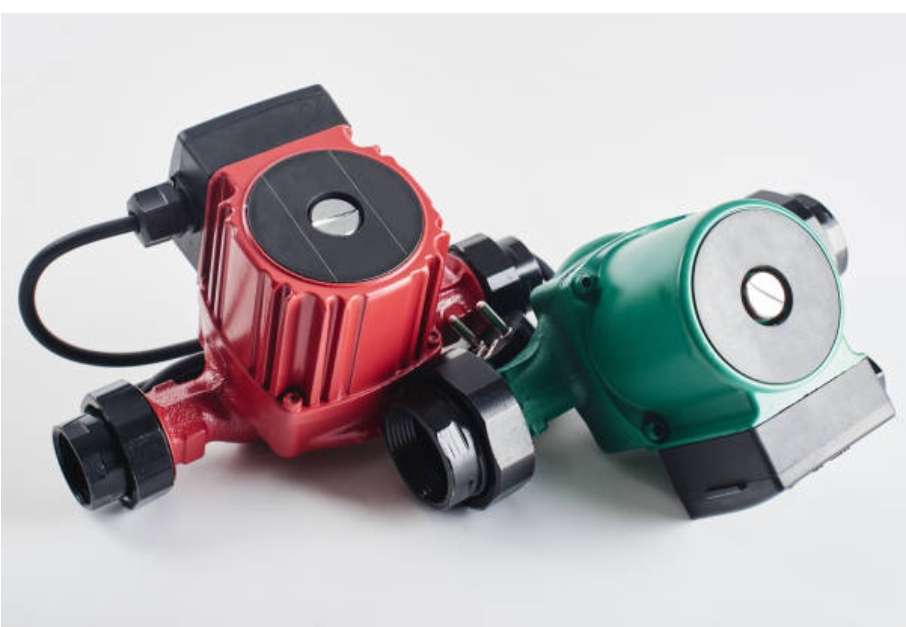In an era where energy conservation is paramount, individuals and industries alike are constantly seeking innovative solutions to reduce their carbon footprint. One such solution gaining popularity is the use of circulation pumps.
These unassuming devices play a crucial role in various applications, from residential heating systems to industrial processes. In this comprehensive article, we delve into the world of circulation pumps, exploring their functionality, types, and, most importantly, the remarkable energy-saving benefits they bring to the table.
Understanding Circulation Pumps
What are Circulation Pumps?
Circulation pumps, also known as circulators, are mechanical devices designed to move fluids within a closed system. They operate by creating a flow within pipes, ensuring that the fluid circulates efficiently through the entire system.
While commonly associated with heating systems, circulation pumps find applications in a wide range of industries, including HVAC (Heating, Ventilation, and Air Conditioning), plumbing, and even certain industrial processes.
Types of Circulation Pumps
1. Centrifugal Pumps
Centrifugal pumps are the most common type of circulation pump. They work by using an impeller to increase the fluid’s velocity, creating a centrifugal force that moves the fluid through the system.
These pumps are known for their simplicity, efficiency, and versatility, making them a popular choice in various applications.
2. Recirculation Pumps
Recirculation pumps, as the name suggests, are designed specifically for the recirculation of fluids. In residential applications, they are commonly used in hot water recirculation systems, ensuring hot water is readily available at faucets without the need for prolonged waiting periods.
3. Submersible Pumps
Submersible pumps are designed to be submerged in the fluid they are pumping. They are often used in applications where the pump needs to be placed directly in the fluid, such as in wells or wastewater systems. These pumps are known for their efficiency and durability.
4. Positive Displacement Pumps
Positive displacement pumps operate by trapping a fixed amount of fluid and then forcing it into the system. This type of pump is highly effective in applications where precise control of fluid flow is necessary, making them suitable for various industrial processes.
The Energy-Saving Advantages of Circulation Pumps
1. Improved Energy Efficiency
One of the primary benefits of circulation pumps is their contribution to improved energy efficiency. By ensuring a consistent and controlled flow of fluids, these pumps minimize energy wastage associated with inefficient circulation.
In heating systems, for example, circulation pump play a crucial role in distributing hot water evenly, reducing the need for excessive heating and subsequently lowering energy consumption.
2. Reduced Heat Loss
In residential and commercial heating systems, heat loss is a significant concern. Circulation pumps help mitigate this issue by maintaining a steady flow of heated fluid throughout the system.
This consistent circulation prevents the heat from dissipating in certain areas, ensuring that the entire space receives the intended warmth. As a result, the need to continuously heat the fluid is diminished, leading to considerable energy savings.
3. Quick Hot Water Access
Hot water recirculation systems, powered by circulation pumps, offer another dimension of energy efficiency. Rather than waiting for the tap to run hot water, these systems keep a constant flow of warm water in the pipes, ready for immediate use.
This eliminates the need to run the faucet for extended periods, saving both water and the energy required to heat it.
4. Optimized HVAC Systems
In HVAC systems, circulation pumps contribute to energy savings by ensuring the efficient distribution of conditioned air.
By maintaining a consistent flow of air, these pumps help regulate temperature more effectively, reducing the workload on heating and cooling units. This optimization results in lower energy consumption and prolonged equipment life.
5. Variable Speed Technology
Modern circulation pumps often incorporate variable speed technology, allowing them to adjust their speed based on the system’s demand.
Unlike traditional fixed-speed pumps, variable speed pumps can operate at lower speeds during periods of lower demand, significantly reducing energy consumption. This adaptability makes them a key player in achieving optimal energy efficiency.
Applications of Circulation Pumps
1. Residential Heating Systems
In residential settings, circulation pumps are integral components of heating systems. Whether it’s a traditional boiler system or a modern radiant floor heating setup, these pumps ensure that the heated fluid circulates efficiently, providing a consistent and comfortable indoor environment.
The energy-saving benefits translate into reduced utility bills and a smaller environmental impact.
2. Hot Water Recirculation
Hot water recirculation systems are a popular application of circulation pumps in residential and commercial buildings. These systems eliminate the need to wait for hot water, reducing water wastage and energy consumption.
Homeowners and businesses alike appreciate the convenience and efficiency offered by instant access to hot water.
3. Industrial Processes
Circulation pumps play a crucial role in various industrial processes, where the efficient movement of fluids is essential.
From manufacturing and chemical processing to wastewater treatment, these pumps contribute to maintaining optimal conditions, ensuring both productivity and energy efficiency.
4. HVAC Systems
In the realm of HVAC, circulation pumps are indispensable for the proper distribution of heated or cooled air.
By facilitating efficient air circulation, these pumps help maintain consistent temperatures, improving comfort levels and energy efficiency in both residential and commercial buildings.
5. Agricultural Irrigation
Agricultural irrigation systems rely on circulation pumps to ensure the even distribution of water across fields. By maintaining a consistent flow, these pumps contribute to water conservation and energy efficiency in agricultural practices.
Considerations for Choosing Circulation Pumps
1. System Requirements
When selecting a circulation pump, it is crucial to assess the specific requirements of the system it will be integrated into. Factors such as flow rate, pressure, and the type of fluid being circulated play a pivotal role in determining the appropriate pump for the job.
2. Energy Efficiency Ratings
Energy efficiency is a key consideration in the selection of circulation pumps. Look for pumps with high Energy Star ratings or other certifications that indicate compliance with energy efficiency standards. Investing in an energy-efficient pump can lead to substantial long-term savings.
3. Variable Speed Capability
Opting for circulation pumps with variable speed capability adds another layer of energy-saving potential. These pumps can adjust their speed based on demand, optimizing energy consumption and reducing overall operational costs.
4. Maintenance Requirements
Consider the maintenance requirements of the circulation pump. Choosing a pump with minimal maintenance needs not only ensures consistent performance but also contributes to long-term energy efficiency.
5. Integration with Smart Systems
Some modern circulation pumps are designed to integrate with smart home or building automation systems. This allows for advanced control and monitoring, enabling users to further optimize energy usage based on real-time data and preferences.
Challenges and Solutions in Circulation Pump Technology
1. Overcoming Resistance in Pipes
One common challenge in circulation pump systems is overcoming resistance in the pipes, which can lead to increased energy consumption. Proper system design, including the correct sizing of pipes and pumps, can help mitigate this challenge.
Additionally, the use of advanced pump technologies, such as variable speed pumps, can adapt to changing conditions and maintain efficient circulation.
2. Balancing Flow Rates
Balancing flow rates in multi-zone heating systems can be challenging, as each zone may have different requirements.
Circulation pumps with variable speed capability and advanced control systems can help balance flow rates dynamically, ensuring each zone receives the necessary amount of heated fluid without unnecessary energy wastage.
3. Minimizing Heat Loss in Hot Water Recirculation Systems
Hot water recirculation systems are designed to minimize heat loss, but some challenges may still arise. Proper insulation of pipes, the use of efficient pump technologies, and strategic placement of recirculation lines can address these challenges and maximize energy savings.
4. Selecting the Right Pump for the Application
Choosing the right pump for a specific application is critical for achieving optimal energy efficiency.
Consulting with experts in fluid dynamics and pump technology can help identify the most suitable pump for the intended purpose, ensuring long-term energy savings and performance.
Conclusion
Circulation pumps stand out as unsung heroes in the realm of energy efficiency. From residential heating systems to industrial processes, these devices play a vital role in optimizing fluid circulation and, consequently, conserving energy.
As technology advances, the integration of smart features, variable speed capabilities, and innovative materials further enhances the energy-saving potential of circulation pumps.
With a thoughtful approach to pump selection, system design, and maintenance, individuals and industries can harness the full benefits of these energy-saving wonders, contributing to a more sustainable and eco-friendly future.



